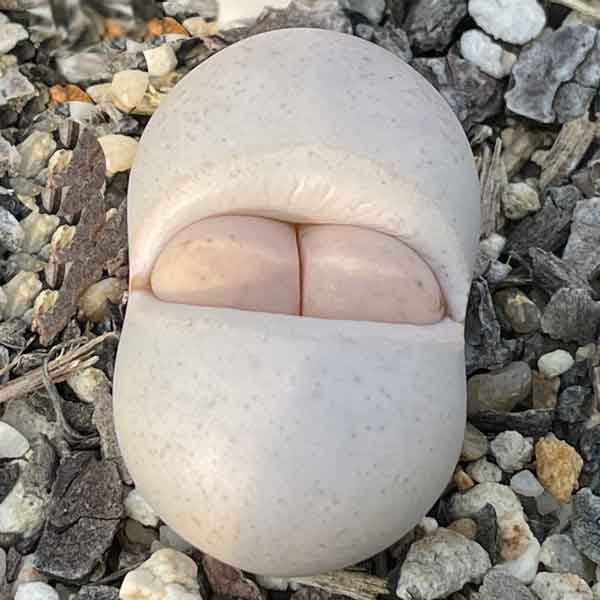
From Namibia and named after Ernst Rusch who first collected the species Lithops ruschiorum subsp. nelii in 1923.
In its natural environment it will form a clump, node this is a variable species like many Lithops.
Colour varies from near white to bluish white, brownish white and even a tinge of yellow, all depending on exactly where it is found.
Lithops ruschiorum Care
Like all Lithops species it grows well in full sun and needs around 6 hours of good light a day to flower, however it does require gentle introduction to full sun to precent sunburn in the leaves.
In warmer climates we suggest some protection from hot afternoon sun in summer.
If growing indoors, on a windowsill or similar, rotate the plant every week to prevent it reaching for the light and stretching. If the leaves begin to take on a lot of colour, this suggests that it receiving too much direct sun.
- Temperature Range
Best kept in a summer range of 73F (23c) – 77F (25C). At over 30C for long periods the plant can go into a sort of dormancy.
In winter, protect from frosts and avoid freezes, ideally no lower than 6 -8C at night. - Growing medium (Substrate)
A well drained soil or potting mix is essential. See our potting mix for Lithops video.
Also use a deep pot, as Lithops do have a deep root system including a tap root of sorts. - Watering
In general, water only when the growing medium dries out.
When the plant is dividing, shedding it’s old leaves it’s time to cut back on watering to avoid problems.
If you notice shrinking or shrivelling of the top skin, then a little water is requires.
The best time to water is in the morning, this gives the plant and soil a chance to dry a little during the day time. - Fertiliser
You only need to add fertiliser when repotting, once every 2 – 3 years. Use a low nitrogen fertiliser.
Lithops ruschiorum Propagation
- This is done from seed, or division of established clumps.

